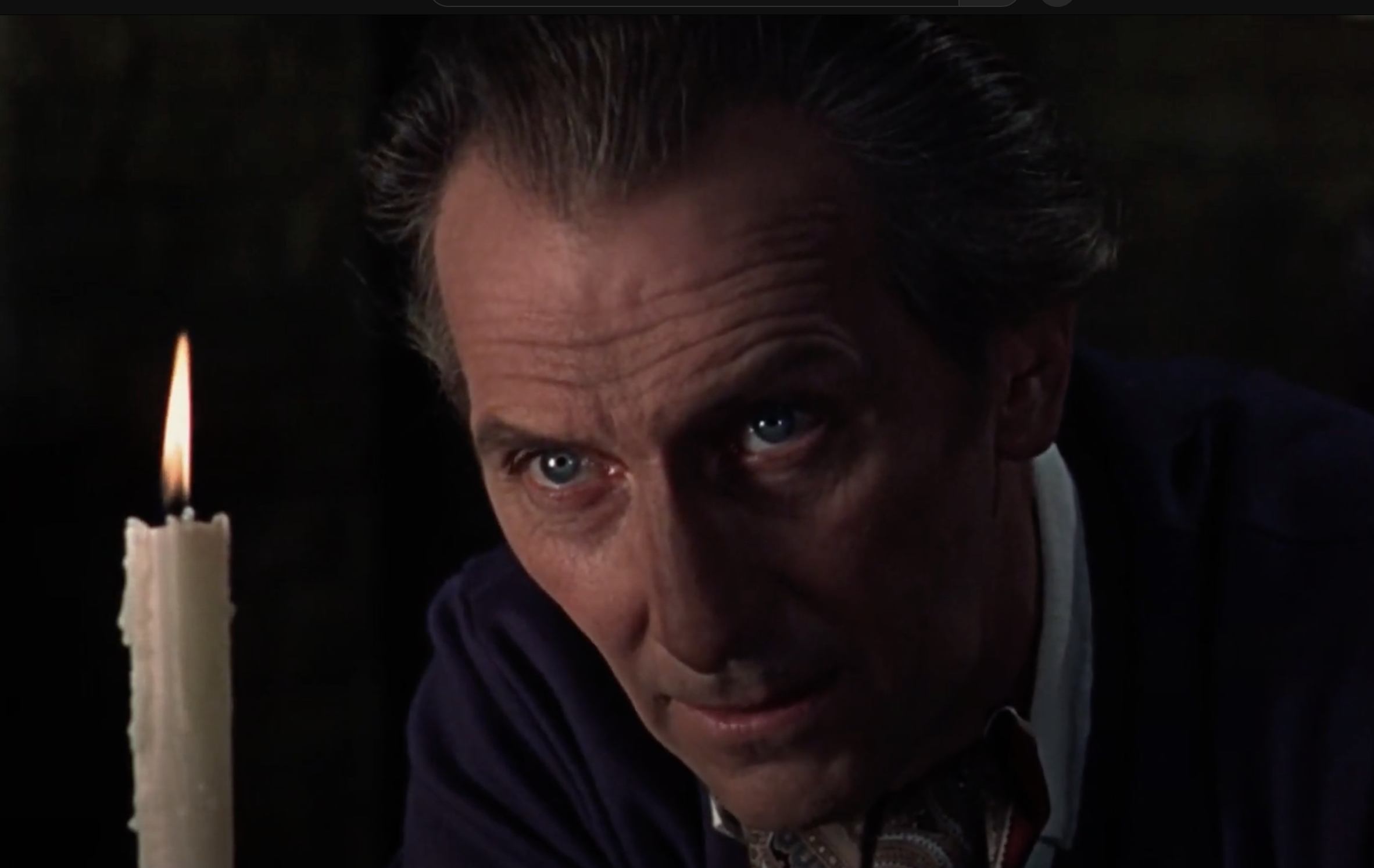
by Fiona Moore
Much as I enjoy the jollity of the festive season, I’m also firmly of the opinion that there is nothing better than a ghost story—or, failing that, a horror story—at Christmas. So I was quite delighted to learn my local cinema would be showing the latest British horror movie, Curse of the Crimson Altar.
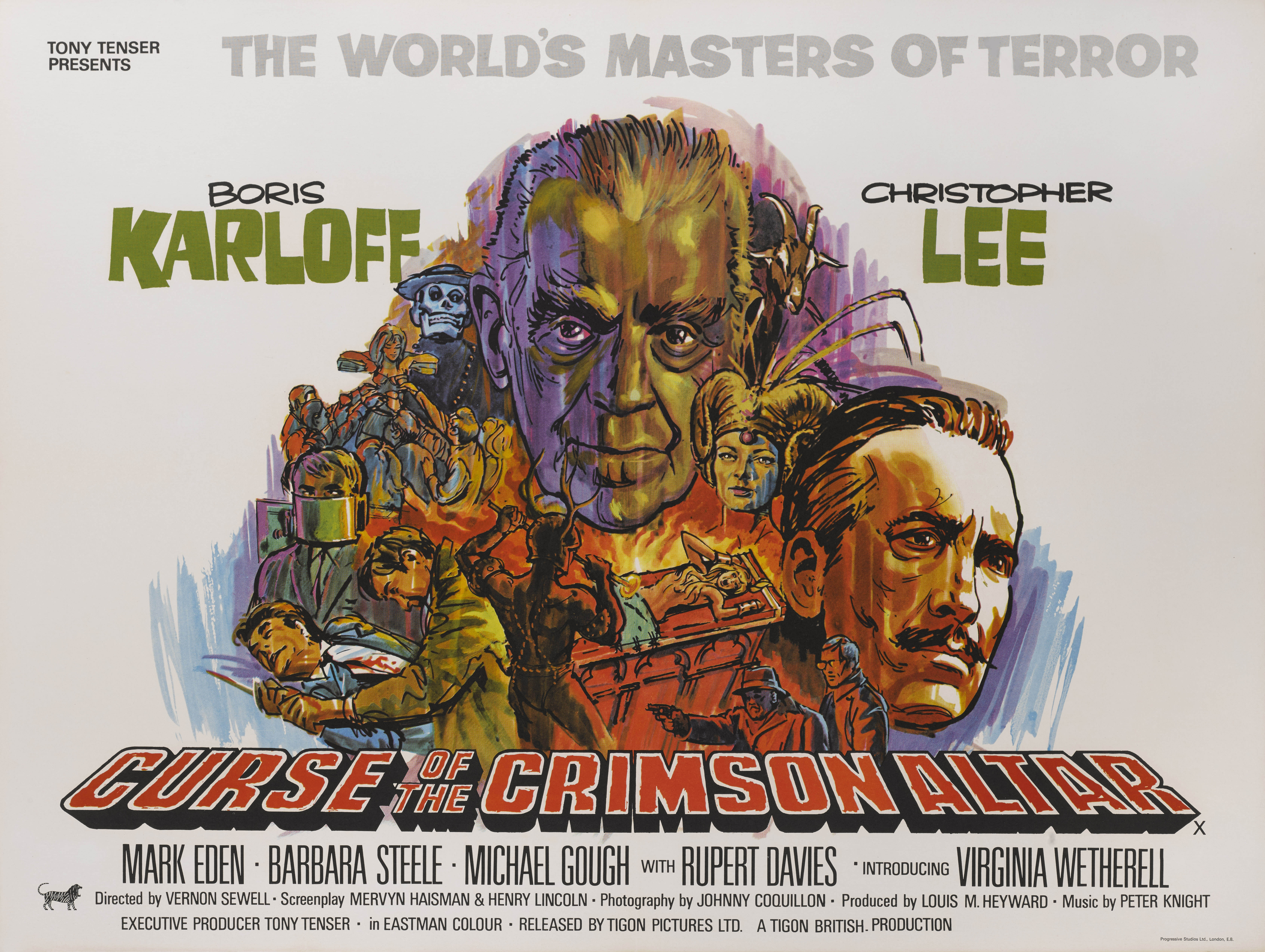
Curse follows in the footsteps of this summer’s Witchfinder General in being a film where the horror is not supernatural but psychological, suggesting that this genre may be coming into fashion. Although the biggest creative obstacle Curse has to overcome is that someone behind the scenes, or possibly in the censor’s office, has meant that the actual catalyst for the horror remains subtextual throughout.
At the start of the movie, we get a quote from an unnamed “medical journal” about the influence of psychedelic drugs on the human brain: “drugs of this group can produce the most complex hallucinations and under their influence it is possible by hypnosis to induce the subject to perform actions he would not normally commit.” Thereafter, we get no reference to drugs at all, but it should be fairly clear to the viewer how we should interpret the proceedings.
The plot involves an antique dealer, Robert Manning (Mark Eden), going in search of his brother Peter, who has disappeared on an expedition to hunt for salable stock, sending Manning a single candlestick, a witchfinders’ bodkin, and a cryptic note on notepaper from a country estate, Craxted Lodge in the town of Greymarsh. Arriving at the estate, Manning finds Lord Morley (Christopher Lee) and his niece Eve (Virginia Wetherell) gearing up for a local Bonfire Night-type holiday, celebrating the anniversary of the burning of a local witch, Lavinia Morley (Barbara Steele), the Black Witch of Greymarsh. They claim never to have met Manning’s brother, but invite him to stay with them while he investigates. Manning begins suffering from strange erotic dreams about Lavinia Morley and sleepwalking episodes, and, with the help of a local historian and occult enthusiast, Professor Marsh (Boris Karloff), discovers he is descended from one of the people who sentenced Lavinia to death. Someone is out for revenge, but who, and how, and why?

Lascivious Lavinia as played by Barbara Steele
The movie boasts a lot of familiar names behind and in front of the camera, being scripted by Henry Lincoln and Mervyn Haisman, creators of Doctor Who’s Great Intelligence and Yeti, and featuring Roger Avon, Michael Gough and scream-queen Barbara Steele in supporting roles. Gough in particular does a great turn as a manservant who is either under the influence of malign spirits, or else doped to the eyeballs, at all times. The casting of Lee and Karloff, both seasoned horror veterans who usually play villains but have turned their hand to more benign roles, keeps the suspense going as to who is behind the sinister events, and there's a cute nod to Karloff's role when Manning remarks that he feels “like Boris Karloff might pop up at any moment” shortly before, in fact, he does.
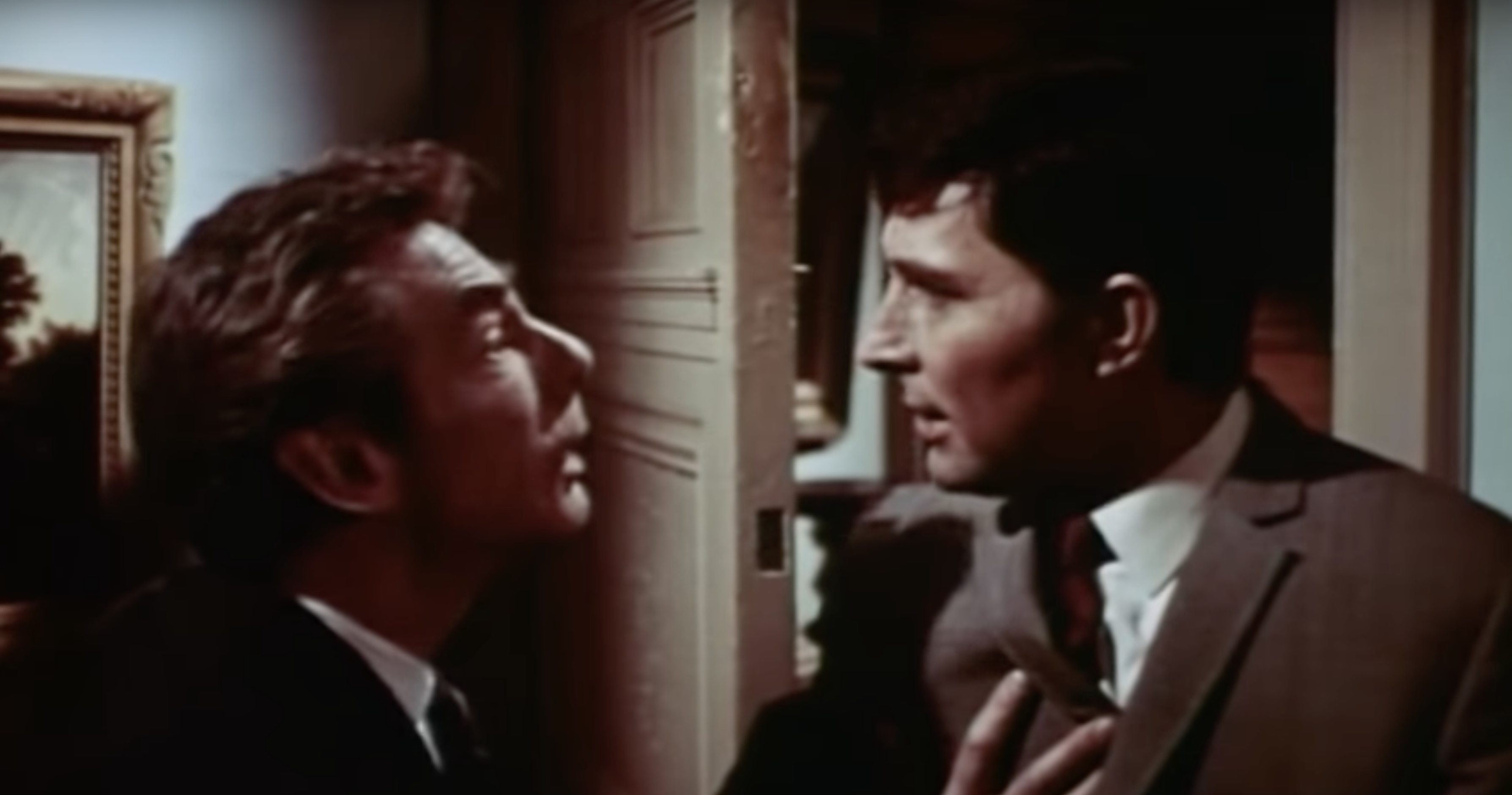
Michael Gough as a zombie manservant.
In many ways the story feels a little like an episode of The Prisoner or The Avengers, involving as it does a villain who is using psychedelic drugs and mind games to wear down an unsuspecting victim. The fact that the script can’t directly say that drugs are involved also helps to make the events more ambiguous, suggesting for most of the movie that Manning might really be haunted by the vengeful spirit of Lavinia Morley. The imagery of the dream sequences is very much drawn from British folk culture, with sinister figures in animal masks and references to the witch-hunts of the 17th century.
Unfortunately, the story is also a little uneven, with a long prurient episode featuring Eve having a debauched party with her young artist friends apparently going nowhere; presumably the intention was to suggest that Eve might be behind, or at least complicit in, the implicitly drug-fueled activities which follow, but it mostly seems to be included to cater to the crowd of people who like to tut about modern youth going wild while secretly enjoying the orgy scenes. Similarly I found the dream sequences more laughable than erotic, with supposed demons and witches walking around clad in strips of imitation leatherette. There are also some gaps in the narrative, which I won’t detail in order not to give away the denouement, and the ending felt rather rushed to me.
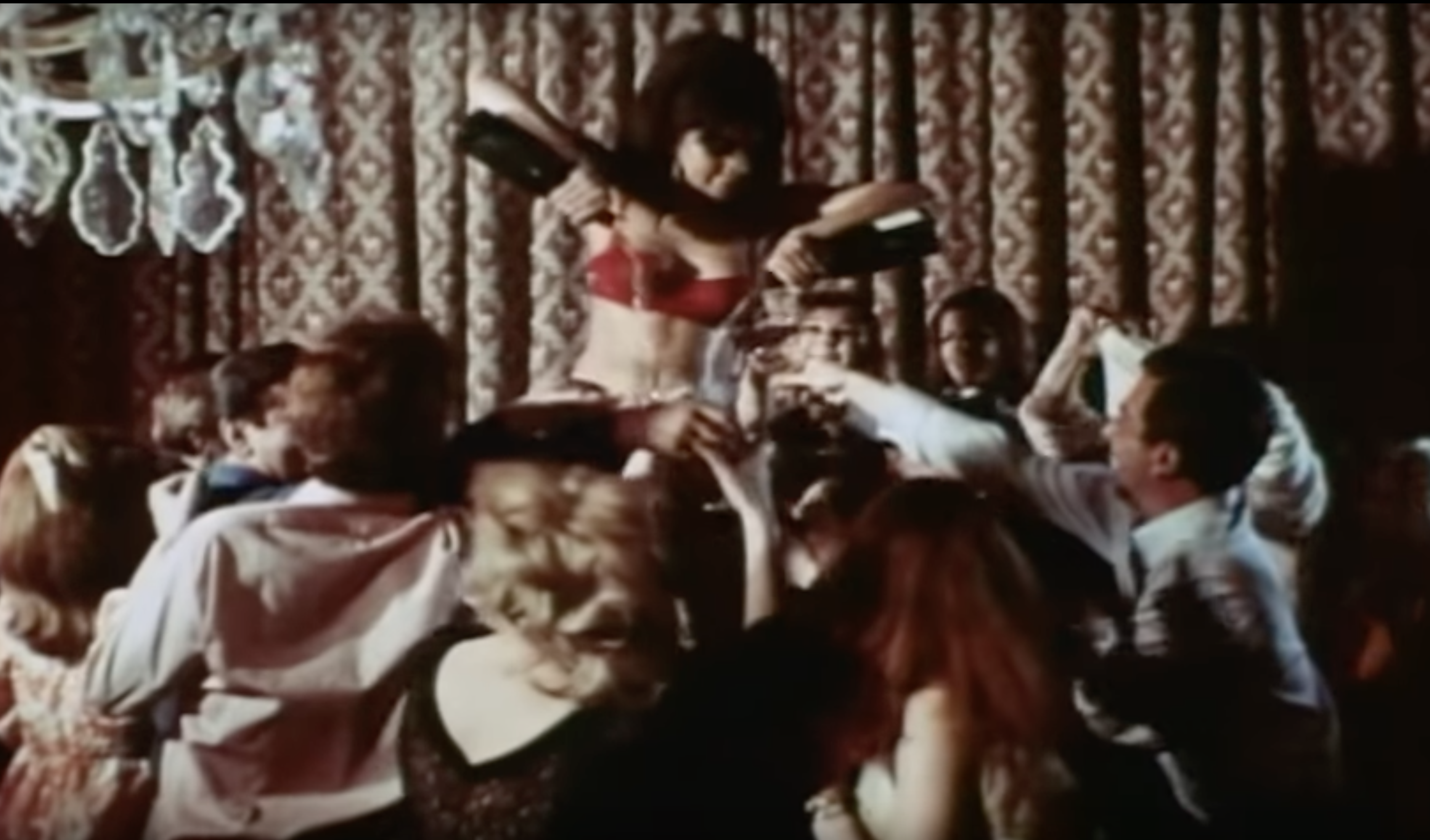 Another tedious sex party, ho hum.
Another tedious sex party, ho hum.
All in all, I’d say this is a solid if uneven horror story that keeps the viewer guessing for a long time, and suggests that the non-supernatural horror based in British folk mythology is here to stay.
Three and a half stars.

I’d also like to devote a little time to the B feature on the night I saw Curse of the Crimson Altar, a short and cheap SF-horror from 1964 entitled The Earth Dies Screaming, directed by the supremely talented Terence Fisher. The scenario is straight out of John Wyndham: a test pilot, returning from a high altitude flight, discovers that almost everyone else on Earth has been killed—apparently through some kind of gas attack, as the few survivors are people who, for one reason or another, were not breathing the atmosphere at that point. Less Wyndham-esque are the eerie, silent robots now stalking around the deserted Earth, who bear such a strong resemblance to Cybermen that one wonders if it is simply coincidence or if Doctor Who’s design team had been at the movies before working on “The Tenth Planet”. The robots also have the ability to turn anyone they shoot into grey-eyed, mindless creatures who do their bidding.
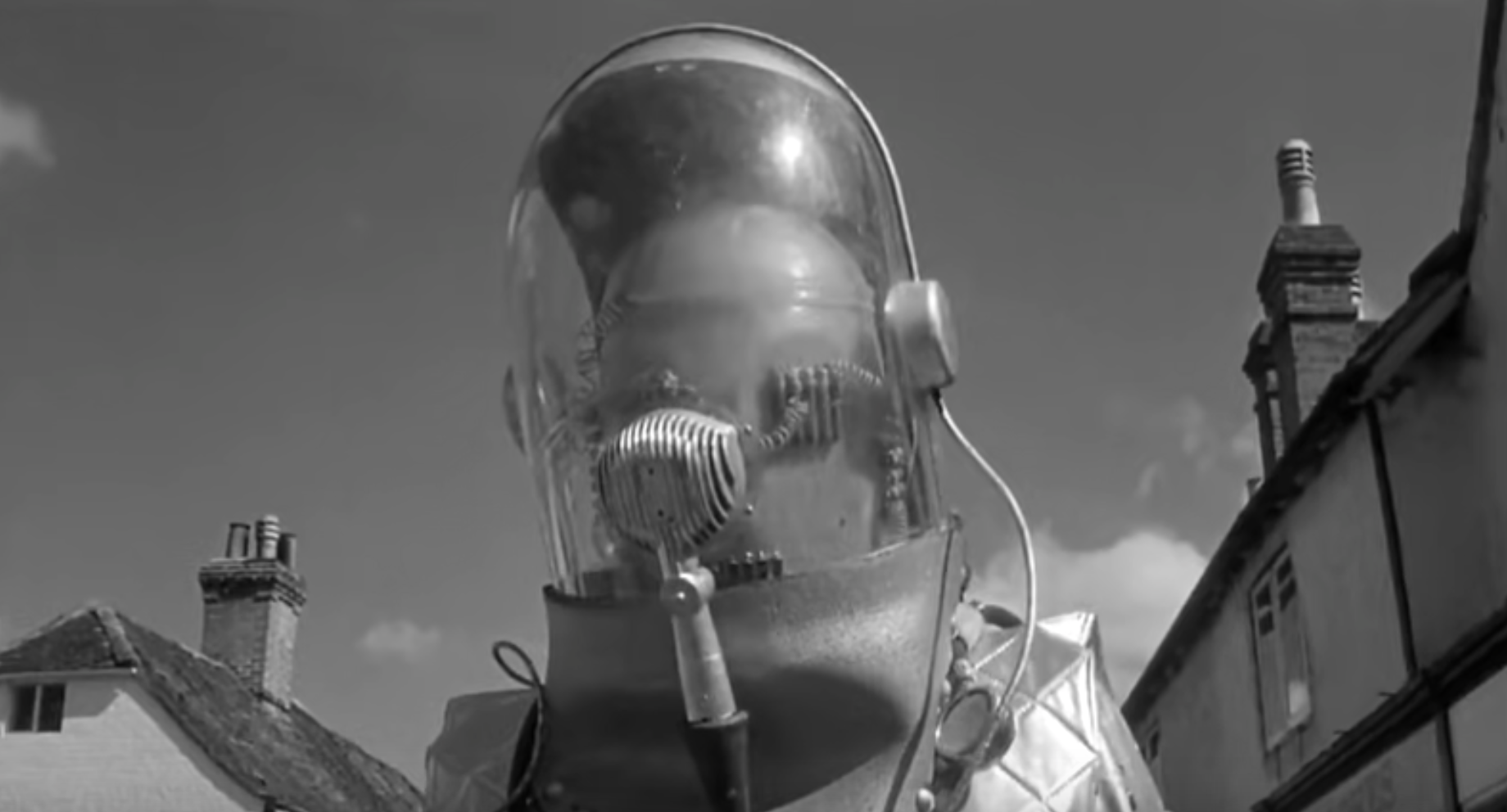
See what I mean? That's a Cyberman, that is.
Our hero joins a band of survivors seemingly calculated to provide optimum drama (society woman; hedonistic good-time couple; sinister man in a mac; teddy-boy mistrustful of anyone over 30 and his heavily pregnant young wife) and collectively they attempt to figure out how to survive and to stop the robots, despite the conflicting agendas in the group.
While suffering a little from uneven pacing and characterisation (the teddy boy, for instance, suddenly overcomes his suspicions of the establishment for no reason other than plot convenience), this is a pleasingly eerie 62 minutes. I quite like the sub-genre of apocalypse stories that just focus on a small group of people trying to cope with their changed circumstances, and the parallels with the aftermath of a nuclear war are clear without being didactic.
Three stars.

![[December 18, 1968] Sex, Drugs and Boris Karloff: Curse of the Crimson Altar](https://galacticjourney.org/wp-content/uploads/2023/12/Curse_of_the_crimson_altar_poster.jpg)

![[August 14, 1968] The World, the Flesh and Charles Gray (the horror movies <i>Torture Garden</i> and <i>The Devil Rides Out</i>)](https://galacticjourney.org/wp-content/uploads/2023/08/680814posters-1-672x372.jpg)


